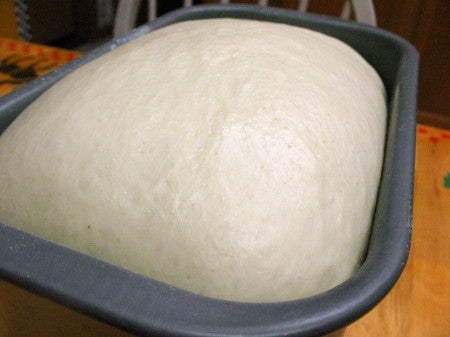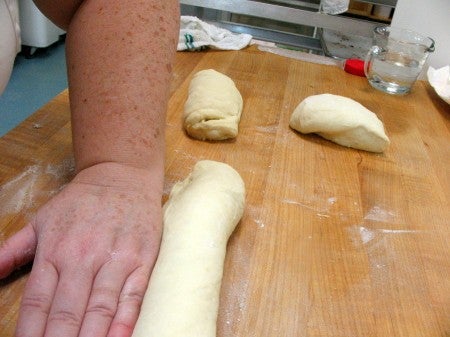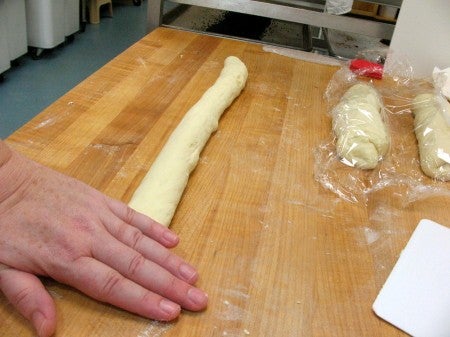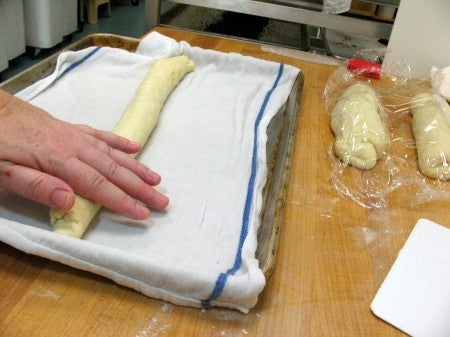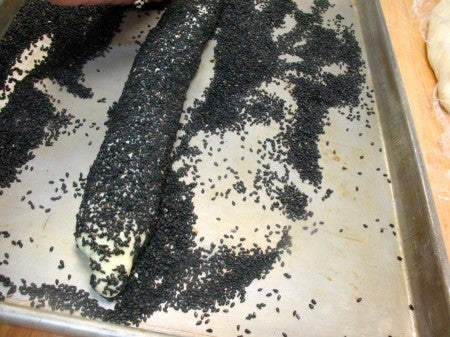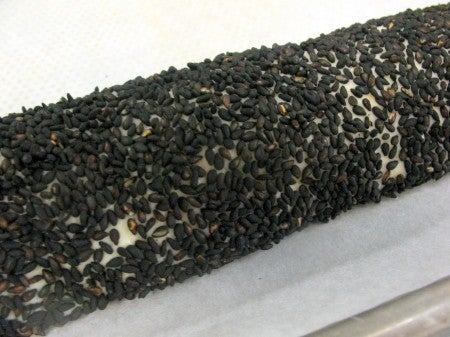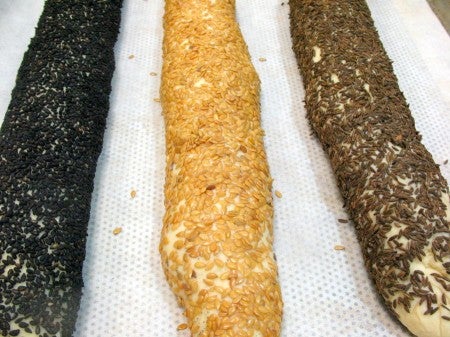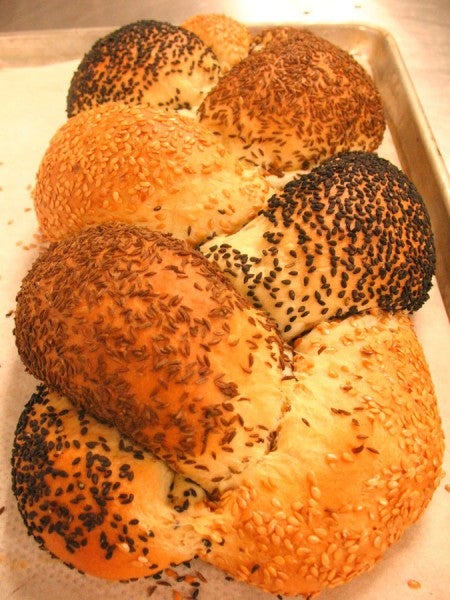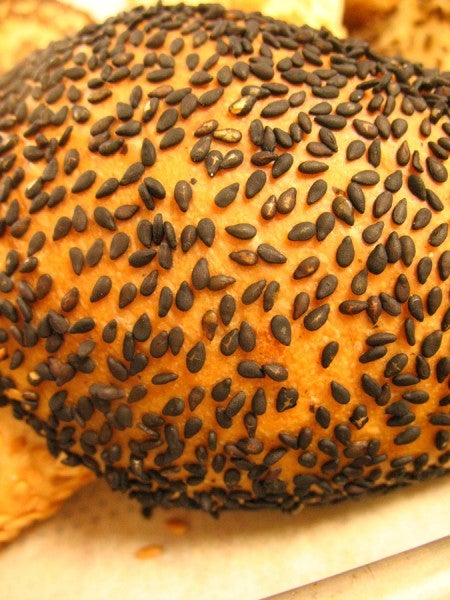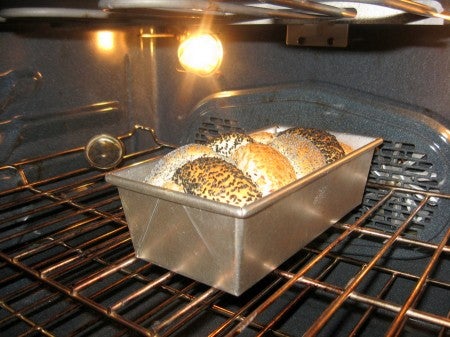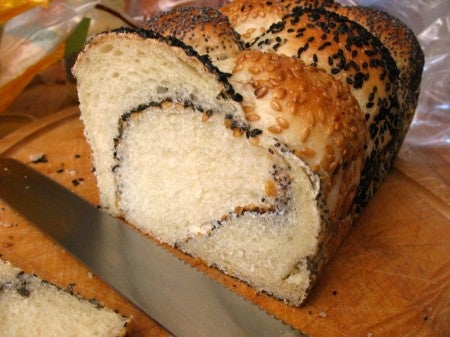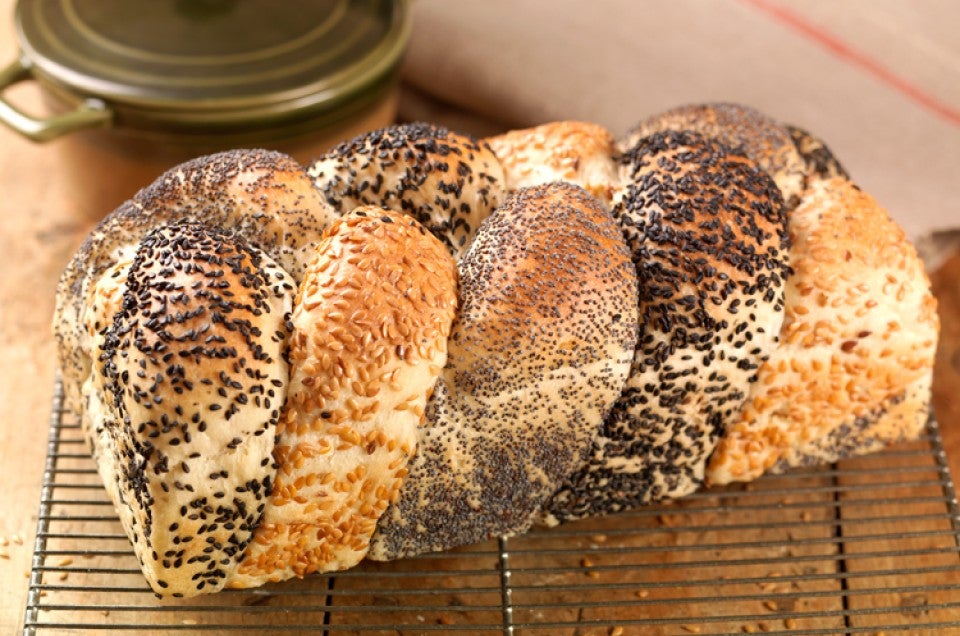


Your reading glasses, that pair of earrings, and of course your cell phone. Some things just never seem to stay where you put them. Take sesame seeds, for example.
In the past, any time that I had tried to put seeds on a loaf of bread most of them had to be scooped up and sprinkled back on the bread after slicing. Like blueberries in Sal's bucket they would plink, plank, plunk off the sides and top of the loaf – leaving it stripped down to its bare skin, as it were.
Sure, I had tried the egg wash route and it certainly did help, but what a slippery mess it could be to deal with. Oh woe, how could I get my loaves to look like professional loaves? Luckily a hard day's work with a group of professional bakers provided the answer.
A couple of years ago I was working in our Baking Education Center with our Master Baker Jeff Hamelman. I was the assistant for the day in one of the professional classes and as luck would have it, they were making seeded braids that day. What followed was a truly eye-opening experience, and one I've been happy to share with other bakers ever since.
Are you ready to learn a great new trick that can take your seeded loaves and braids to a whole new level? Let's go!
Start with your favorite bread dough, made by hand or machine. While the dough is rising, prepare three baking sheets or parchment-lined work areas.
The first will have a slightly damp, lint-free kitchen towel on it. The second will be a baking sheet with an even layer of your seeds of choice; and the third will be a resting place for the seeded strands after they've been coated. This can be the same parchment-lined baking sheet on which the shaped and seeded loaf will rise and bake.
Divide the dough into thirds. Pat each piece into a small rectangle, then fold in thirds as you would fold a business letter. Use the side of your hand to seal the seam firmly, and press forward like a bulldozer to tighten the outer skin of the strand.
Gently roll the strand 14" long.
Here comes the key to getting those seeds to stick to every little bit of your bread.
Lift the strand and place it on the slightly dampened lint-free towel. Gently roll back and forth to coat the whole strand with a light layer of moisture.
The moisture mixes with a bit of the starch in the flour and forms a surface that's sticky and works like glue.
Immediately place the damp strand onto the seed-lined tray, rolling back and forth to coat the entire strand in seeds.
Wowza, that's what I call seed-coated!
Empty and clean the seed tray, then repeat the process with your remaining strands and different seeds. Here I used black sesame seeds (l), golden flax seeds (c) and caraway seeds (r).
To ensure that the seeds stick even better, spritz each strand with a bit of water. This will also help your braided strands cling to each other.
Braid up the loaf and place it on a baking sheet to rise for another 30 to 40 minutes. Bake in a preheated 400°F oven for 20 to 25 minutes, or until the internal temperature of the loaf reads 190°F. If you're making a no-knead bread or heavy, whole-grain loaf, the internal temperature should read 200°F to 205°F.
So lovely, and so seeded!
Now, some seeds will naturally flake off during slicing and serving. But there should be plenty still left to make your loaves both handsome and tasty.
Alternately, you can place the loaf in a 9" x 5" loaf pan. Rise as directed and bake at 350°F for 25 to 30 minutes.
Why the time change? The bread will be thicker and denser in the center, so it needs more time and a lower temperature to bake properly. The same internal temperatures would still apply.
Can't you just hear the ooohs and aaahs as folks slice into this bread? This particular loaf went to our customer service department for MYOGCD, a.k.a. Make Your Own Grilled Cheese Day. My sammie had this bread; sliced Granny Smith apple, and smoked Vermont cheddar, and was grilled to perfection by my boss, Matt. Grilled Cheese Day was his thank-you gift to the department for putting in 110% on our big email drive. Thank YOU Matty!
I hope this technique will inspire you to try seeded breads and braids if you haven't before; or give you a new way to boost the beauty of your favorite loaf.
See more bread making tips like this in our post 3 ways to switch up your bread baking.


